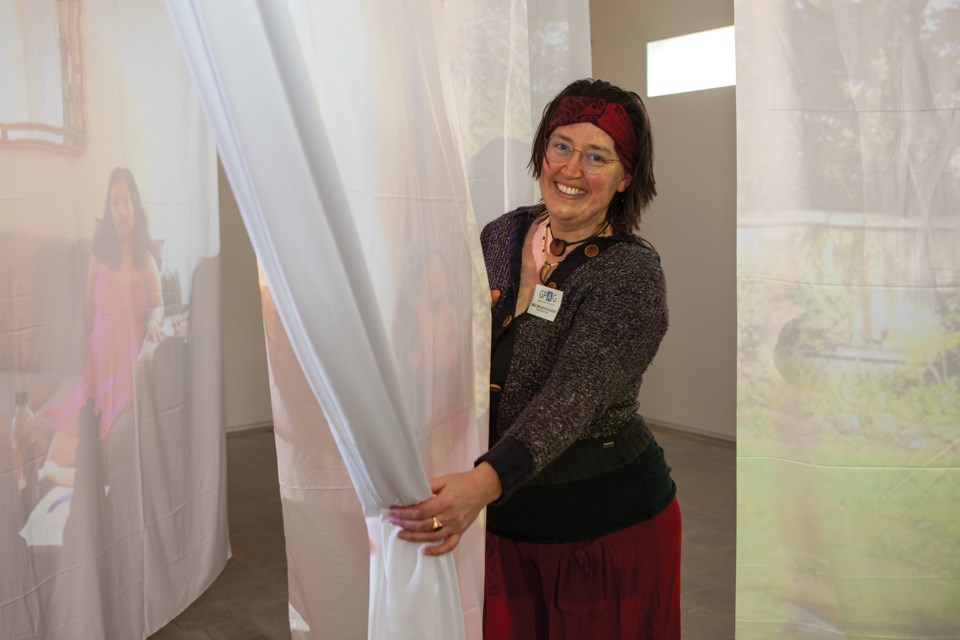It took three water taxis to transport the Bowen Island admirers of artist Emily van Lidth de Jeude to the Canadian debut of her exhibition what.home. Together with day trippers from Vancouver, more than 60 people gathered at the Gibsons Public Art Gallery to meet the artist on Feb. 11.
van Lidth de Jeude originally premiered the work in Amsterdam following an artist residency in the Netherlands. The longtime Bowen Island resident began her formal education in the same country, with training in painting and printmaking at the Royal Academy of Fine Arts in The Hague.
what.home unites two- and three-dimensional artworks with moving images beamed onto a forest of diaphanous draperies. The pieces form a multidisciplinary meditation on the true nature of home. van Lidth de Jeude designed the show to prompt viewers’ reflections on their own definitions.
“I want to make art that’s about getting people to think about who we are, where we are, and even our own history,” said van Lidth de Jeude. “In this case, it came out of my own search for belonging, as a child of divorce. We can’t all just go back to where we came from, because where is that? Ten different places from different parents? But also there’s the guilt we feel for being settlers [on Indigenous territory]. I really think we’ll never reconcile all of these feelings, but we can at least come close to processing them if we just put them on the table.”
After her introduction by gallery president Leslie Thomson, van Lidth de Jeude read from her own poetry. Her verse flows into the titles of her abstract works in graphite and oil.
In Sit with me and watch the sun yellow behind the smoke, tree-like tendrils ascend, crooked but resolute, through darkness. In the triptych Enigma Variations, clutches of wild grass commingle with whorls of starlight. The practice of partitioning appears in both Fingal’s Cave and Devil’s Dream, whose images are segmented into 13 diagonally-arrayed tiles containing rich colours and complementary geometries.
“There is nothing more important in my life than trying to evoke some kind of feelings in other people, especially towards change and as community connection,” van Lidth de Jeude said.
The multimedia projections in the main gallery are the result of van Lidth de Jeude’s interviews with 29 individuals about divergent definitions of home. The audiovisual clips play continuously for 7.5 hours before repeating, requiring visitors to make a repeat pilgrimage to absorb every word. The aural tapestry is flanked by shots of scenic landscapes and playing children filmed in Victoria, West Vancouver, and Bowen Island.
Although van Lidth de Jeude is unseen during the interviews, her voice and strategic silences helped guide her subjects. “There are a couple of points where I say something because it was too precious to cut my voice out when someone was on a roll,” she said, “but I’m silent also. And everybody I interviewed in these two- to three-hour sessions came to some place of questioning their thoughts and experiences.”
van Lidth de Jeude stressed the traditional Skwxwú7mesh word Nexwlélexm for her Bowen Island community, emphasizing the complexity and elasticity of home’s definition.
what.home’s appearance in Gibsons is the result of the gallery’s recent move to include the work of artists from beyond its Sunshine Coast base.
van Lidth de Jeude’s what.home exhibition remains on display at the Gibsons Public Art Gallery until March 5. Learn more at gpag.ca.




